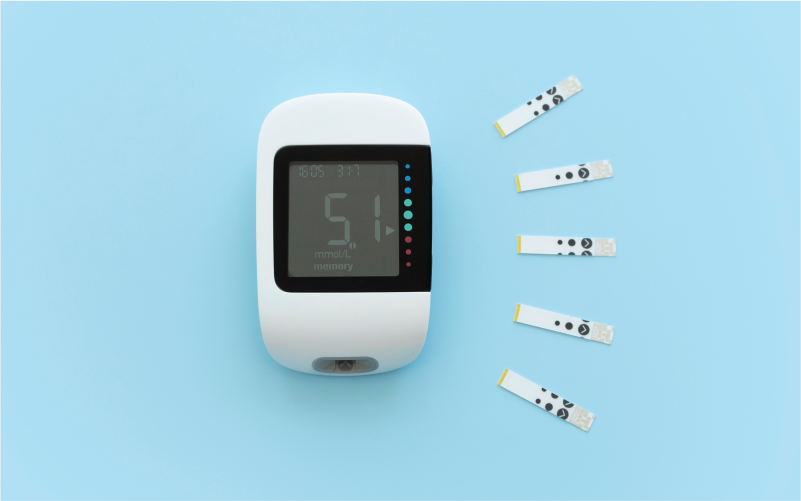Continuous Glucose Monitoring (CGM)
Continuous Glucose Monitoring (CGM) is a technology used to monitor glucose levels in individuals with diabetes. It provides real-time, continuous measurements of glucose levels, offering valuable insights into glucose fluctuations throughout the day and night. Here’s an overview of CGM and how it works:

How it Works
CGM systems consist of three main components: a small glucose sensor, a transmitter, and a receiver or smartphone app. The sensor is typically inserted under the skin, usually in the abdominal area, and measures glucose levels in the interstitial fluid. The sensor continuously sends glucose readings to the transmitter, which wirelessly transmits the data to the receiver or smartphone app. The receiver or app displays the glucose readings, trends, and alerts in real-time.
When is it Used
CGM is commonly used by individuals with diabetes, especially those on insulin therapy. It is particularly beneficial for people with type 1 diabetes and type 2 diabetes who are insulin-dependent. CGM helps individuals with diabetes to:
Monitor glucose trends: CGM provides a continuous stream of glucose data, allowing users to see how their glucose levels change throughout the day, including after meals, during exercise, and overnight.
Detect hypoglycemia and hyperglycemia: CGM alerts users when their glucose levels are too high (hyperglycemia) or too low (hypoglycemia), helping them take prompt action to prevent complications.
Make informed treatment decisions: CGM data assists individuals with diabetes in adjusting their insulin doses, timing of meals, and physical activity based on their glucose patterns.
Evaluate the impact of lifestyle factors: CGM helps individuals understand how factors such as diet, exercise, stress, and medication affect their glucose levels, facilitating personalized diabetes management.
Benefits and Risks:
CGM offers several benefits, including:
Improved glucose control: CGM enables individuals to make more informed decisions about insulin dosing, leading to better glucose control and reduced risk of diabetes-related complications.
Hypoglycemia detection: CGM alerts users when their glucose levels are approaching or falling into the hypoglycemic range, allowing for timely intervention.
Trend analysis: CGM data reveals glucose trends and patterns, helping identify areas for improvement and fine-tune diabetes management strategies.
Some potential risks and considerations associated with CGM include:
Accuracy: CGM systems have improved over the years, but they may still have some level of variability and calibration requirements. It is important to understand the limitations of the specific CGM system being used.
Skin irritation: Some individuals may experience skin reactions or irritation at the sensor insertion site. Proper site preparation and rotation can help minimize these issues.
Cost: CGM systems can be expensive, and not all insurance plans cover them fully. Cost considerations should be discussed with healthcare providers and insurance providers.
CGM has revolutionized diabetes management by providing real-time glucose data and empowering individuals with diabetes to make timely and informed decisions about their diabetes care. It is important to work closely with healthcare professionals to interpret CGM data and adjust treatment plans accordingly.







